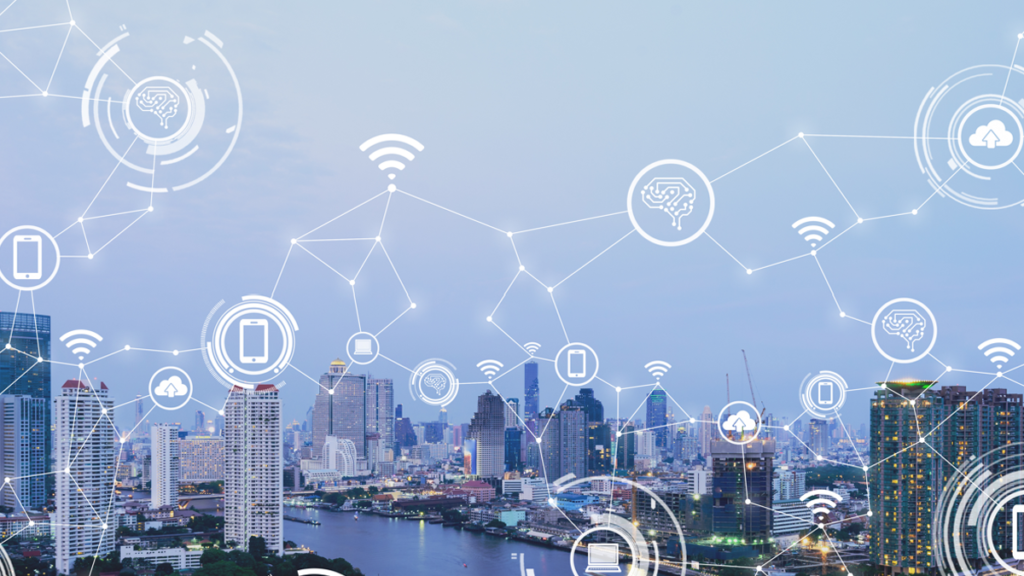The digital era is changing what’s required of industrial sensors and the new levels of real-time connectivity and data processing are the foundations for capabilities like artificial intelligence (AI), supervised machine learning, digital twin,s and augmented reality. This article from Stratus Technologies discusses.
The concept of adding sensors – and eventually intelligence – to assets was first discussed in the 1980s when students created a way to get their campus vending machine to report on its contents to save them a journey if it was out of their preferred beverage. The concept was taken further with the first IoT device being created in 1990 by John Romkey whose toaster could be turned on and off over the Internet.
Just one year later, Romkey added a crane system that inserted the bread as well. Now, while this is a far cry from the complex capabilities we can see today with industrial sensors, it did paint the picture of things to come; onsite data collection, raw material monitoring, and remote operations are all now commonplace in many modern industrial settings.
Today, almost every industrial setting, large or small, is packed with IoT sensors to reliably and remotely detect and record feedback. There is an exhaustive list of example applications, from monitoring temperature in a pharmaceutical production facility to keeping workers outside of danger zones in hazardous areas. So, with a technology that is so fundamental to the modern industrial setting, what does the future of IoT sensors look like when joined with onsite data analysis from Edge computing capability?
Sensing evolution
Just as they have in consumer technology, IoT sensors are getting smaller and more affordable, meaning they can be included in new equipment or retrofitted to an ever-growing list of machines and processes. The abundance of data from modern sensors opens the potential for industrial enterprises to achieve production, efficiency and maintenance improvements, but producing data is one thing – deriving insight from that data requires analysis.
Collection only isn’t enough
This is where Edge computing comes in, especially for those businesses that are retrofitting legacy assets with sensors. While sensors are perfectly fit for purpose when it comes to collecting data, there needs to be technology in place to receive, store, protect and analyse in real-time to deliver the most value. With this in mind, a resilient Edge computing platform is a must-have. While sending sensor data to the cloud is an option, the bandwidth and latency issues (not to mention the cost of cloud space) make it impossible for onsite operators to make those efficiency-improving decisions in real time.
Edge computing keeps that compute capability much closer to the source of the data. Not only does this provide real-time information for onsite operators, but taking that data and feeding it into enterprise-wide operations (including, for less time sensitive data that requires larger computing capacity, the Cloud) opens up huge potential for continuous improvement. With such a set up in place, sensors, an Edge computing platform, and the IoT are now working together for the best possible outcome; the flow of data in the organisation has been unlocked and new capabilities can be explored.
The future of factories
As teams within the business have the tools they need to make efficiency improvements, they may ask, what’s next? What does the next generation of IoT sensors and Edge Computing platform enable for my business? The answer to that question is artificial intelligence, which unlocks the full potential of the IoT, making use of the advanced sensor technology.
As more devices are communicating, AI learns from these interactions and can automatically adapt accordingly. Sifting through the ever-growing amount of data being presented by the latest IoT sensors, AI needs the real-time processing capability only found in an Edge computing platform to help decision making on the fly. Learning from past decisions, predicting future activity, and providing a clear path to continuous improvement, AI promises new levels of productivity and efficiency.
When working in collaboration with the next generation of sensors, it creates an ‘AIoT’. A manufacturing enterprise with all pieces of the puzzle in place now sees assets that can ‘think’ for themselves. Any efficiency improvement that was seen in isolation can be quantified and applied across the entire business – anything from minor environmental temperature differences to the best practices of certain employees, or true preventive maintenance.
The next generation of IoT sensors can offer real insight into asset health and operational data, but when combined with combined with an Edge computing platform, they can lead to continuous and meaningful industrial transformation.
Sensors are a huge part of digital transformation, acting as the eyes of the network across a facility, collecting vital data.
Without a resilient Edge computing platform in place, that vital information isn’t readily available to the people that need it the most. The Edge computing platform is a central step in any digital transformation journey, with continuously available real-time data acting as the base, without manufacturers won’t even be able to begin exploring future capabilities that will advance their business beyond their competitors.
The future of manufacturing can be seen by the next generation of IoT sensors, but only fully realised when coupled with a simple, protected, and autonomous Edge computing platform.
For more on connected technologies, check out our Smart Cities page.
Plus, you can learn more by commenting below, or visiting our LinkedIn page and sister site, Electronic Specifier!
